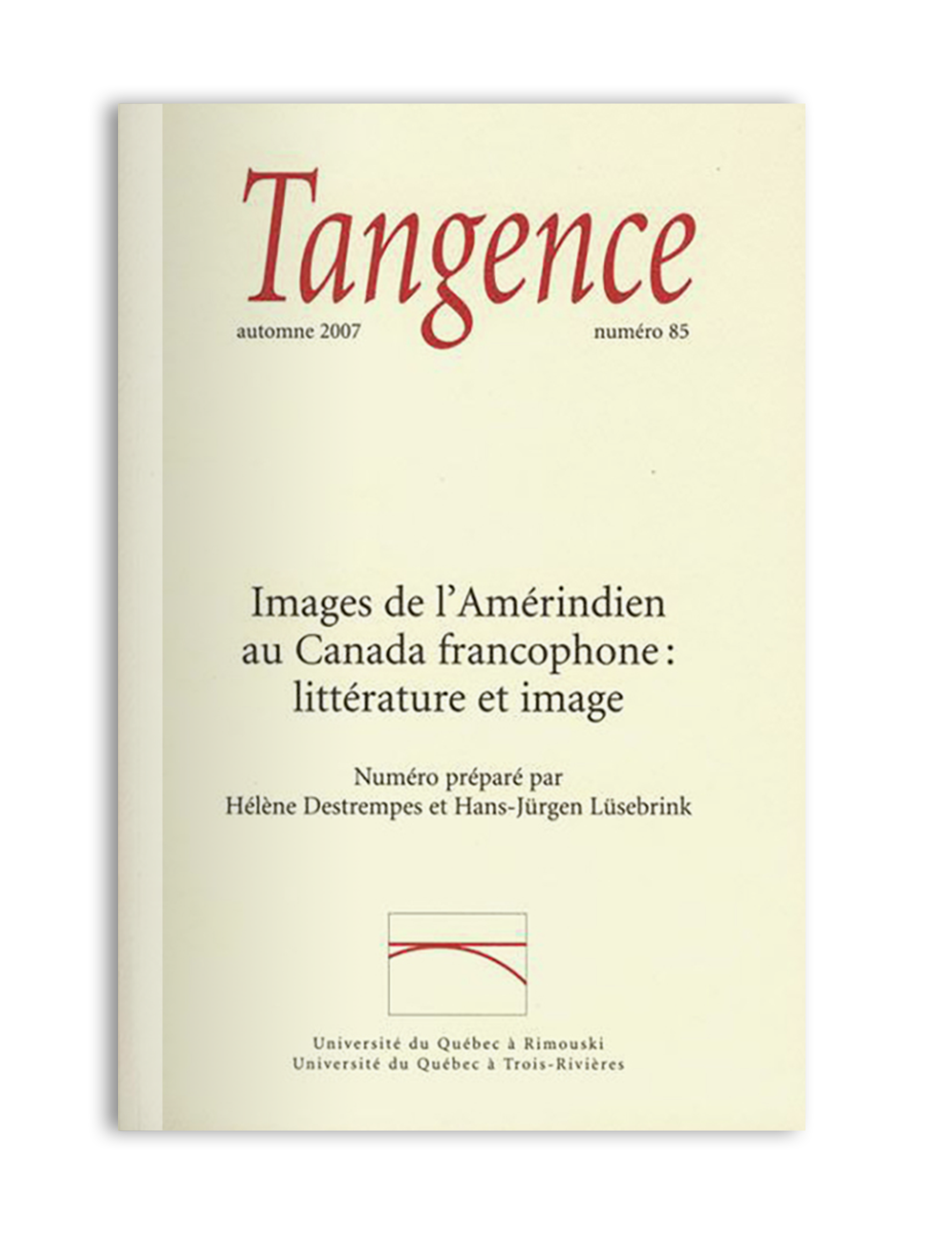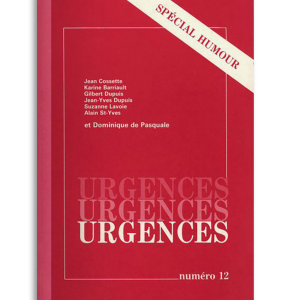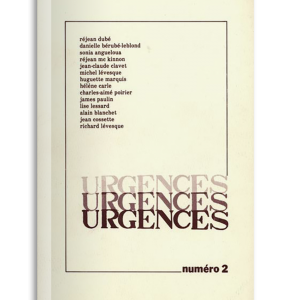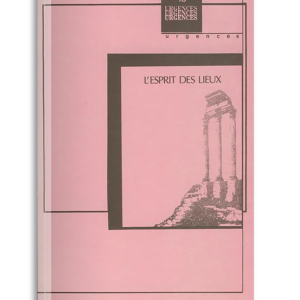N° 85, automne 2007
Images de l’Amérindien au Canada francophone : littérature et image
Réal Ouellet
Canadois et Caraïbes sous le regard des chroniqueurs du XVIIe siècle
Les débuts de la colonisation des Antilles et du Canada par la France sont exactement contemporains, et souvent les mêmes personnages se retrouvent sur les deux territoires habités par des Amérindiens, partageant plusieurs traits communs. Pourtant, les représentations qu’en donnent les chroniqueurs sont très différentes. Cela tient moins à des discordances ethniques ou géographiques qu’au type de rapport établi avec les populations autochtones. Les chroniqueurs des Antilles, à part quelques exceptions (Breton, notamment), ne partageant pas la vie des indigènes, comme le missionnaire Lejeune ou le militaire Lahontan, se rabattent plus facilement sur les mythes de l’Âge d’or ou du Paradis terrestre.
Canadois and Caraïbes in the eyes of seventeenth-century chroniclers
French colonization of the Antilles and Canada began at exactly the same period, and often the same figures, possessing a number of traits in common, are found on both territories inhabited by the Amerindians. Chroniclers’ representations of them, however, are very different. This is explained less by ethnic or geographic discrepancies than by the type of relationship formed with the Native populations. Because the chroniclers of the Antilles, with a few exceptions (Breton for the most part) did not share the life of the Natives, as did the missionary Lejeune or the soldier Lahontan, it was easier for them to fall back on myths of a Golden Age or an earthly Paradise.
***
Hélène Destrempes
Mise en discours et parcours de l’effacement : une étude de la figure de l’Indien dans la littérature canadienne-française au XIXe siècle
La figure de l’Amérindien habite l’imaginaire québécois et canadien-français depuis les débuts de la colonie. Plusieurs critiques réputés, comme Maurice Lemire, Fernand Dumont et Gérard Bouchard, en ont confirmé la présence, pour ne pas dire l’omniprésence, dans les discours politiques et culturels au Québec. Et pourtant, il n’y a eu jusqu’à présent qu’un nombre assez restreint d’études portant sur la nature et le rôle que joue cette figure dans l’économie de la problématique identitaire au Québec. Dans le cadre de recherches portant sur l’analyse des contraintes architextuelles et narratives s’exerçant sur les figures de l’Indien dans la littérature canadienne-française au XIXe siècle, nous avons développé un nouveau modèle interprétatif basé sur le concept de réduction, modèle inspiré par les travaux de Jean-Jacques Simard sur les politiques et les stratégies gouvernementales canadiennes dans le dossier des affaires autochtones. Dans un premier temps, nous esquissons ici le potentiel heuristique de cette notion de réduction, avant de proposer ensuite une analyse de deux contraintes paratextuelles qui ont conditionné, à leur façon, la mise en discours de la figure de l’Indien dans la littérature canadienne-française au XIXe siècle : les titres et les intertitres des œuvres mettant en scène des personnages amérindiens.
Entry into discourse and ongoing treatment of effacement : a study of the figure of the Indian in nineteenth-century French-Canadian literature
The figure of the Amerindian has inhabited the Québecois and French-Canadian imagination since the early days of the colony. Many well-known critics such as Maurice Lemire, Fernand Dumont and Gérard Bouchard have confirmed his presence—not to mention omnipresence—in political and cultural discourse in Québec. And yet, up to now, there have been very few studies on the nature and role of this figure in the economics of the identity issue in Québec. Within the context of research on the analysis of architextual and narrative constraints applied to figures of the Indian in nineteenth-century French-Canadian literature, we have developed a new interpretive model on the concept of reduction, a model inspired by the work of Jean-Jacques Simard concerning Canadian government policies and strategies in the file on aboriginal affairs. First, we briefly outline the heuristic potential of this notion of reduction, then go on to propose an analysis of two paratextual constraints that conditioned, in their way, the entry into discourse of the figure of the Indian in nineteenth-century French-Canadian literature, with the titles and intertitles of works highlighting Amerindian characters.
***
Hans-Jürgen Lüsebrink
L’Amérindien de la tradition populaire dans les almanachs canadiens-français
À la suite d’une brève présentation de l’importance socioculturelle des almanachs canadiens-français, cette contribution analyse les formes de présence de la figure de l’Amérindien dans ce corpus de 1850 à 1950. Très marginale jusqu’au début du XXe siècle, évoquée seulement de manière succincte et stéréotypée, la figure de l’Amérindien devient, dans des récits ethnographiques et des contes populaires publiés dans les almanachs par Marie-Victorin, Corinne Rocheleau et Rodolphe Girard, une composante majeure de l’identité canadienne-française et de sa mémoire historique, dont cecorpus a formé un support de diffusion de tout premier plan.
The Amerindian of popular tradition in French-Canadian almanachs
Following a brief presentation of the sociocultural importance of French-Canadian almanachs, this contribution analyzes the forms of presence of the figure of the Amerindian in this medium from 1850 to 1950. Highly marginal up to the early twentieth century and evoked only in a succinct, stereotyped manner, the figure of the Amerindian becomes, in the ethnographic narratives and popular tales published in the almanachs by Marie-Victorin, Corinne Rocheleau and Rodolphe Girard, a major component of French-Canadian identity and its historic memory, for which this body of work was a premier medium of dissemination.
***
Louise Vigneault
Résurgence du sujet autochtone dans les arts visuels au Québec : effet miroir et présence du refoulé
Cet article entend montrer comment la résurgence de la représentation du sujet autochtone et de l’indianité s’exprime chez les artistes de la communauté francophone du Québec, entre 1830 et 1940. Il s’agit d’examiner la manière dont ce thème a été investi ponctuellement d’une symbolique politique au cours de périodes charnières de son histoire, soit les années qui ont succédé à la défaite du mouvement patriote et les politiques de censure de l’Union nationale introduites à l’instigation de Maurice Duplessis. Cette thématique aurait alors répondu au besoin d’exprimer les enjeux identitaires de la communauté, sa crainte face à sa propre assimilation et à son acculturation, ainsi que sa révolte à l’égard des différentes formes d’aliénation dont elle a été victime.
Reappearance of Native subjects in the visual arts in Québec : mirror effect and presence of the repressed
This article aims to show how the reappearance of representations of Native subjects and indianity was expressed by artists in Québec’s francophone community between 1830 and 1940. It focuses on how this theme became invested from time to time with political symbolism during pivotal times in Québec’s history, notably, the years after the defeat of the patriot movement and those of the Union nationale’s policies of censure, introduced at the instigation of Maurice Duplessis. It appears this theme responded to the need at the time to express the community’s identity issues, its fears about assimilation and acculturation, and its revolt against the various forms of alienation it had suffered.
***
Jean Morency
Images de l’Amérindien dans le roman québécois depuis 1945
Sans être omniprésente dans le roman québécois au XXe siècle, l’image de l’Amérindien a néanmoins joué un rôle significatif dans l’évolution de certaines thématiques romanesques, comme celles des grands espaces et de la nature rédemptrice. Les romanciers québécois ont souvent attribué à la figure de l’Amérindien une fonction symbolique dans le mouvement de prise de conscience de leur appartenance au continent américain. Cette image se révèle ainsi indissociable de l’expression et de la revendication d’une identité nord-américaine, cette dernière étant perçue comme résolument distincte de l’identité française. Cet article vise à dégager quelques-uns des avatars de l’image de l’Amérindien dans le roman québécois de 1945 à nos jours, avatars qui ont été regroupés en deux grands ensembles : d’un côté, les Indiens proprement dits et, de l’autre, les Métis et les faux Indiens.
Images of the Amerindian in the Québec novel since 1945
Although the image of the Amerindian did not figure extensively in the twentieth-century Québec novel, it nonetheless played a significant role in certain fictional themes, such as those dealing with wide open spaces and redemptive nature. Québec novelists often invested the Amerindian with symbolic importance in terms of the Québécois’ growing awareness of belonging to the American continent. This image proved to be an integral part of the expression and assumption of a North American identity, perceived as distinctly different from French identity. The article in hand aim is to highlight certain examples of the image of the Amerindian in the Québec novel from 1945 to the present ; the examples are divided into two main groups : the Indians as such and the Métis or false Indians.
***
Emmanuelle Tremblay
En pays d’huronie. Les enfantômes de Réjean Ducharme
Dans cet article, nous examinons les significations symboliques de la figure de l’Indien, dans Les enfantômes(1976) de Réjean Ducharme. La fonction narrative de cette figure revêt ici une dimension critique qui se donne à lire dans les représentations romanesques de la marginalité constitutives d’une tradition littéraire que la modernité reprend à son compte à travers une écriture caractérisée par une invention rhétorique que Ducharme désigne sous le nom d’« huronie ». L’analyse vise à mettre en évidence la manière dont cette dernière permet de penser une appropriation de l’indianité en raison de la liberté langagière qu’elle autorise, de la déconstruction du lieu commun dont elle procède ainsi que de l’hybridité et de l’altérité qu’elle génère. Il s’agit alors de montrer en quoi l’huronisation relève d’un principe de médiation entre les différents référents culturels convoqués (sérieux / populaires ; français / québécois / anglo-saxons) en raison du passage de l’un à l’autre qu’elle autorise par le procédé de la traduction, laquelle oscille entre fidélité et trahison, pour ainsi fonder le caractère ambigu de l’appartenance identitaire dans le texte ducharmien, de même que la logique paradoxale qui le sous-tend et qui s’appuie sur le refus de l’espace consensuel. À la lumière d’une complexification de la problématique identitaire mise en jeu par la création romanesque, cette étude tend à renouveler le discours postcolonial par un dépassement de l’opposition « centre / périphérie » qui règle l’interprétation de l’affirmation identitaire dans le contexte des cultures minoritaires.
In Huronie. Réjean Ducharme’s Les enfantômes
This article focuses on the symbolic meanings of the figure of the Indian in Réjean Ducharme’s Les enfantômes (1976). Here, the narrative function of this figure takes on a critical dimension, which can be observed in fictional representations of the marginality underlying a literary tradition adopted by modernity in a writing characterized by a theoretical invention Ducharme terms huronie. The analysis aims to highlight the manner in which the latter makes it possible to consider an appropriation of indianity thanks to the freedom of language it allows, the deconstruction of the commonplace from which it stems and the hybridity and otherness that it generates. The issue, then, is to show how huronisation stems from a principle of mediation between the various cultural referents evoked (serious/popular ; French/Québécois/Anglo-Saxon) owing to the passage from one to the other that occurs during translation. Translation, in turn, fluctuates between fidelity and treason, and then proceeds to root the ambiguous nature of identitary belonging within the Ducharmian text along with the paradoxical logic that underlies it and that rests on the refusal of consensual space. In light of a complexification of the identitary issue put into play by fictional creation, this study aims to renew postcolonial discourse by moving beyond the “center/periphery” opposition that governs the interpretation of identity affirmation in the context of minority cultures.






